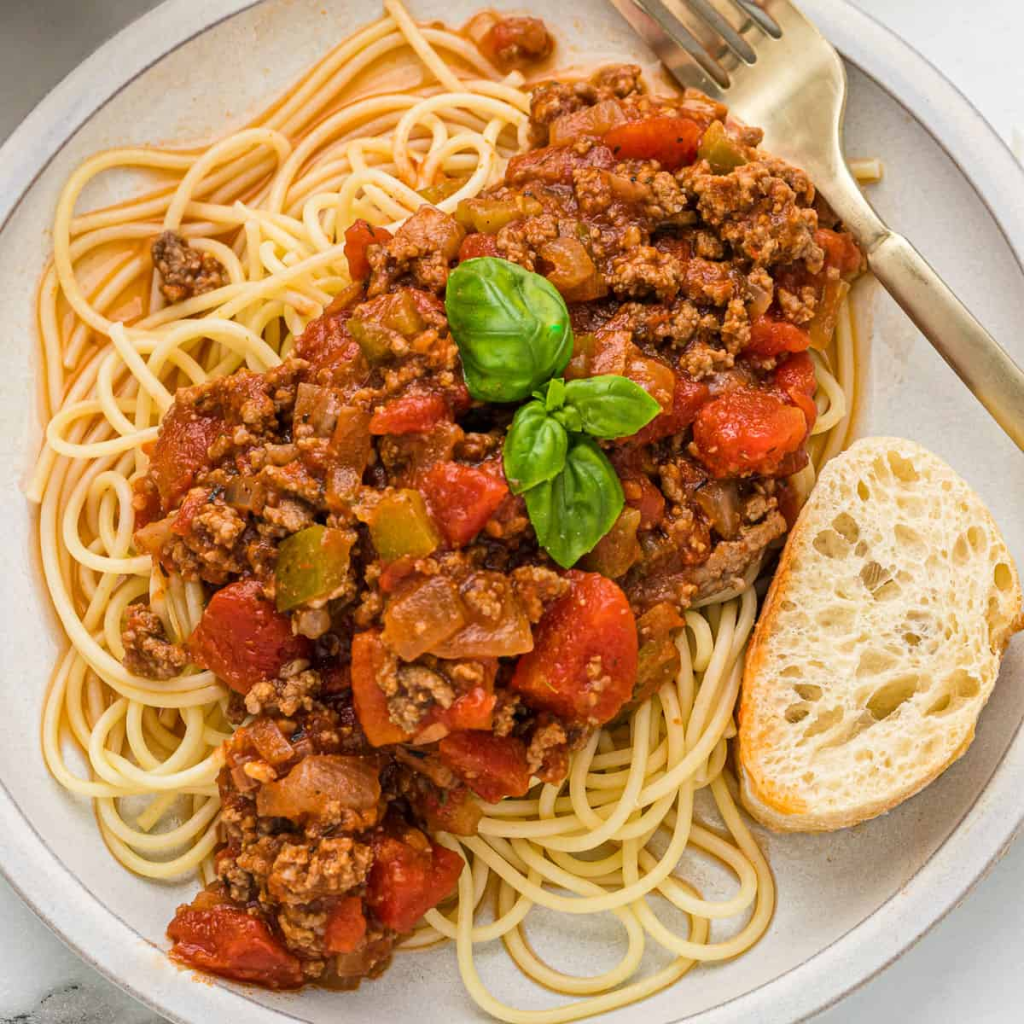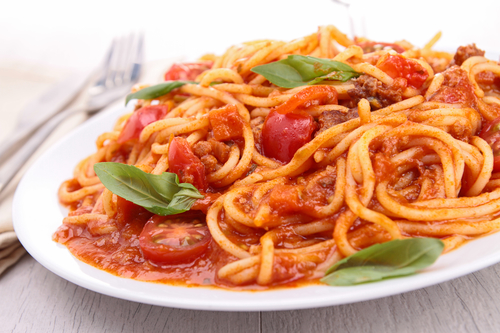The debate over whether to add sugar to spaghetti sauce has long divided home cooks and professional chefs. Some believe that adding sugar enhances the overall flavor of the sauce, while others argue it masks the natural taste of the ingredients. Whether you’re new to cooking or a seasoned pro, it’s time to settle this culinary dispute by exploring the arguments on both sides of the table.
The Case for Adding Sugar to Spaghetti Sauce
Balancing the Acidity of Tomatoes

One of the main reasons home cooks add sugar to their spaghetti sauce is to balance the acidity of tomatoes. Tomatoes, especially when canned, tend to be highly acidic. This acidity can leave a tangy or sharp taste that some people find unpleasant. Adding a small amount of sugar can mellow out this acidity, creating a sauce that’s smoother and more balanced. For those who prefer a slightly less tangy sauce, a teaspoon or two of sugar can work wonders in transforming the dish into something more palatable.
Enhancing the Overall Flavor
Sugar, when used in moderation, can also help bring out the natural sweetness of tomatoes. This subtle sweetness adds depth and complexity to the sauce. While tomatoes have their own natural sugars, adding a bit more can enhance the flavors of other ingredients like garlic, onions, and herbs. This is particularly true if you’re using store-bought tomatoes, which may lack the rich sweetness of freshly picked, vine-ripened tomatoes.
Catering to Personal Preference
At the end of the day, taste is subjective. Many people enjoy a slightly sweeter sauce because it’s what they’re accustomed to, especially if their family recipes included sugar. For some, sugar in the sauce brings back comforting childhood memories and is a familiar element in their cooking. So, if you grew up eating spaghetti sauce with sugar, chances are you’ll miss that touch of sweetness if it’s not included.
The Case Against Adding Sugar to Spaghetti Sauce
Preserving the Pure Tomato Flavor
Critics of adding sugar argue that it detracts from the true flavors of the tomatoes and other ingredients. A good spaghetti sauce should highlight the essence of tomatoes, garlic, onions, herbs, and spices without masking them with sweetness. Many culinary experts believe that sugar is an unnecessary addition, especially if you’re using high-quality tomatoes that already offer a perfect balance of acidity and natural sweetness.
Health Concerns
As awareness of the health risks associated with excessive sugar consumption continues to rise, more and more people are opting to eliminate added sugars from their diets. Adding sugar to spaghetti sauce, particularly if it’s already full of rich ingredients, can be seen as an unnecessary indulgence. For those looking to maintain a healthier lifestyle, avoiding added sugars—even in savory dishes—has become more important. Instead, many health-conscious cooks rely on fresh herbs and vegetables to elevate the flavor of their sauce without the need for added sugar.
Staying True to Culinary Tradition
In traditional Italian cuisine, sugar is rarely—if ever—added to pasta sauce. Instead of masking the acidity with sugar, Italian chefs rely on quality ingredients to balance the flavor naturally. They focus on using ripe, flavorful tomatoes, fresh herbs, and long cooking times to create a sauce that needs no additional sweeteners. For many, adding sugar to a classic Italian recipe feels like a departure from tradition. If authenticity is what you’re after, the consensus among Italian chefs is to skip the sugar.
Alternatives to Adding Sugar
If you’re not keen on adding sugar to your sauce but still want to balance the acidity, there are several alternatives you can explore.
Use Fresh Tomatoes
If you’re able to source fresh, vine-ripened tomatoes, you’ll likely find that their natural sweetness and low acidity make for a perfectly balanced sauce without any need for sugar. When possible, choose fresh tomatoes from a local farmers market for the best flavor.
Add Carrots or Sweet Vegetables

Carrots, when cooked, release a natural sweetness that can help neutralize the acidity in tomato sauce. Grating a carrot into the sauce allows the flavors to blend seamlessly, providing that hint of sweetness without needing to reach for the sugar bowl. Other naturally sweet vegetables like bell peppers or sweet onions can also help to balance the dish.
Opt for Long Cooking Times
Letting your sauce simmer for a longer period can help develop the natural sweetness of the ingredients and allow the flavors to meld together. As the sauce reduces and thickens, the sugars in the tomatoes become more concentrated, enhancing the overall flavor without needing to add sugar.
Balance Acidity with Baking Soda
Baking soda is a tried-and-true method to reduce the acidity in spaghetti sauce without adding sweetness. By sprinkling just a pinch of baking soda into the sauce, the pH level is neutralized, which can help mellow out the acidic flavors without altering the flavor profile in the same way sugar does.
Experiment and Find Your Perfect Sauce

There’s no one-size-fits-all approach when it comes to making spaghetti sauce. Whether you prefer to add sugar or keep things more natural, the key is to experiment until you find the method that works best for your taste. Some cooks swear by a pinch of sugar to enhance flavor and balance acidity, while others prefer to let the ingredients shine on their own.
You could try making two batches—one with sugar and one without—to compare the results and see what suits your palate best. You may even decide that sugar works best in some dishes, while other meals benefit from a purer tomato flavor.
Conclusion
The debate over whether to add sugar to spaghetti sauce comes down to personal preference. On one side, adding a touch of sugar can enhance the sweetness of tomatoes and balance acidity, resulting in a smoother and more well-rounded sauce. On the other hand, purists argue that it masks the natural flavors and veers away from traditional Italian cooking. The best advice? Try both approaches and see which one you enjoy more. After all, cooking is about creating something you love, whether that includes sugar or not.
Ultimately, whether you add sugar or skip it, the joy of cooking lies in making your dish your own. So, roll up your sleeves, experiment with different flavors, and create a sauce that you—and your family—will savor.


